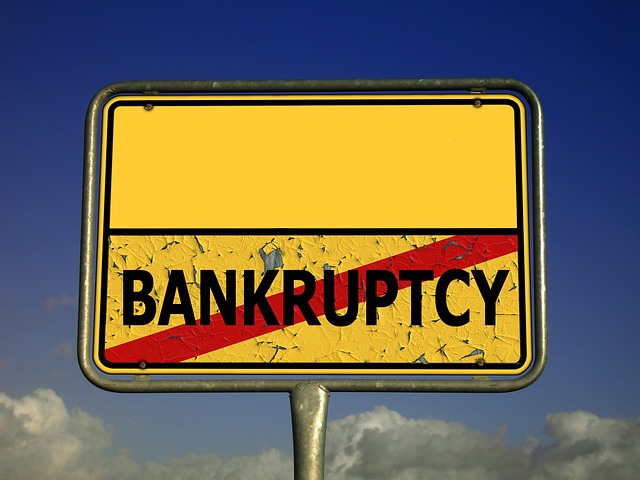Welcome to a world where the intricacies of economics unravel before your very eyes. As we embark on this captivating journey, we invite you to delve into the arcane realm of market failures, where regulations are as elusive as success, and pitfalls lie subtly in the shadows. Brace yourself for “The Economics Crash Course: Uncovering 21 Answers to Market Failures,” an immersive exploration into the inner workings of economic systems that drive our world.
In this article, we shall unveil the secrets that have long perplexed economists and challenged policymakers. With a neutral lens, we navigate through the corridors of economic theory, enlivening complex concepts that have often been confined within the pages of textbooks. Drawing from a diverse tapestry of examples and case studies, we shall transcend mere definitions and equations, breathing life into the very essence of market failures.
Prepare to embark on a journey that will unravel the mysteries behind recessions, market bubbles, and income inequality. With each question posed, we pull the veils of uncertainty, illuminating the reasons behind these seemingly inevitable collapses and showcasing the proactive measures we can adopt to mitigate their devastating impacts.
While our tone remains neutral, the path we tread shall be layered with creativity. Armed with an arsenal of thought-provoking questions and meticulous research, we will navigate the labyrinthine enigma of market failures, deciphering their root causes and formulating innovative solutions to rectify them.
From the misguided incentives that propel financial markets into turmoil, to the systemic disparities that hound developed and developing nations alike, we leave no stone unturned. We will confront the intricate interplay between government policies, consumer behavior, and technological advancements, deconstructing the economic machinery that perpetuates market failures.
Open your mind and join us as we embark on an expedition that promises to unlock the very DNA of market failures. Together, we will demystify the cryptic nature of our economic systems, empowering ourselves with the knowledge to navigate the treacherous terrain of a continually evolving global marketplace. Let us wander through the corridors of theoretical discourse, armed with a creative spirit and a desire to uncover the truths that shape our economic destiny.
Understanding the Economics Crash Course: Unveiling the Hidden Dynamics of Market Failures
Exploring the Intricate Mechanics Behind Market Failures
In this enlightening crash course, we delve into the fascinating world of economics, specifically focusing on the hidden dynamics that give rise to market failures. As we journey together, we’ll unravel the intricacies of these failures, shedding light on the complex interplay of economic forces that can send ripples through global financial systems.
Join us as we embark on a captivating exploration, uncovering the key causes and consequences of market failures. Through engaging discussions and insightful examples, we’ll demystify the crucial concepts that underpin this phenomenon. With a keen eye towards both historical events and current market trends, we’ll examine how information asymmetry, externalities, monopolies, and other factors contribute to the disruption of market equilibrium.
- Unveiling the various types of market failures and their far-reaching implications
- Understanding the role of government interventions and policy measures in dealing with market failures
- Exploring the unintended consequences that arise from attempts to correct imperfections in the market
- Discussing the ethical dimensions of market failures and their implications for societal well-being
Prepare to expand your understanding of economics through a thought-provoking journey that peels back the layers of market failures, revealing the intricate web of economic interactions that shape our world. Gain a fresh perspective on the forces at play and acquire valuable insights to navigate the ever-evolving dynamics of the global marketplace.

Uncovering 21 Common Market Failures: A Comprehensive Analysis
In this ground-breaking study, we delve deep into the intricacies of market dynamics, meticulously examining 21 common market failures that plague economies worldwide. Through an exhaustive analysis and unrivalled attention to detail, we bring to light the often hidden pitfalls that hinder the efficient functioning of markets. Our aim is to provide readers with a comprehensive understanding of these failures, empowering policymakers, businesses, and individuals to make informed decisions to mitigate their detrimental effects.
Each chapter of this study focuses on a distinct market failure, unraveling its causes, implications, and potential remedies. Boldly challenging conventional wisdom, we offer fresh perspectives and insights, debunking misconceptions along the way. From externalities and imperfect competition to information asymmetry and regulatory capture, no stone is left unturned in our quest to expose the vulnerabilities that undermine market efficiency.
- Discover the systemic risks associated with each failure and how they can lead to market distortions.
- Explore case studies that vividly illustrate the real-world consequences of these failures, casting a new light on their severity.
- Learn about the latest research and innovative solutions proposed by leading economists, providing potential avenues for reform.
Drawing from vast empirical evidence, we offer clarity on the intricate interplay of economic factors that exacerbate market failures, while also shedding light on the consequences of inaction. Whether you are an academic, policymaker, or simply a curious individual looking to deepen your understanding of economic systems, this comprehensive analysis is an indispensable resource in uncovering the complexities of market failures and transforming challenges into opportunities for progress.

Insights into Market Failures: Exploring Causes, Consequences, and Solutions
In today’s rapidly evolving global economy, an in-depth understanding of market failures is imperative for businesses, policymakers, and individuals. This section aims to shed light on the multifaceted nature of market failures, delving into their underlying causes, far-reaching consequences, and viable solutions.
From monopolies curbing competition to externalities impacting social welfare, market failures encompass a broad range of deficiencies that hinder the efficient allocation of resources. It is crucial to recognize that these market distortions can have profound impacts on industries, consumers, and even the societal fabric at large.
Causes of Market Failures:
- Monopoly Power: When a single entity controls a significant portion of the market, prices can be artificially inflated, limiting consumer choice.
- Negative Externalities: Industries generating pollution or harmful effects may not bear the full cost, leading to suboptimal resource allocation and environmental degradation.
- Information Asymmetry: When one party possesses more information than the other, such as in financial or healthcare sectors, market failures can arise due to unequal bargaining power.
Consequences of Market Failures:
- Allocative Inefficiency: Scarce resources may be misallocated, undermining economic growth and reducing overall welfare.
- Income Inequality: Market failures can exacerbate wealth disparities, leaving certain segments of society at a disadvantage.
- Loss of Innovation: Inefficient markets fail to incentivize technological advancements and hinder progress in various sectors.
Solutions for Market Failures:
Tackling market failures requires a multifaceted approach involving both public and private sector interventions:
- Regulatory Measures: Governments can establish and enforce laws to prevent anti-competitive practices, protect consumer rights, and promote fair market conditions.
- Corrective Taxes: Implementing taxes on industries generating negative externalities can internalize costs, encouraging businesses to adopt cleaner practices.
- Investment in Education: Enhancing financial literacy and promoting education in areas relevant to market failures can empower individuals to make informed decisions and mitigate information asymmetry.

Navigating Market Failures: Practical Recommendations for Individuals and Policy Makers
In today’s interconnected world, market failures can have far-reaching consequences on individuals and economies. While the concept of market failure may seem daunting, there are practical steps that both individuals and policy makers can take to navigate these challenges and foster a more resilient economy. Here are some recommendations:
- Enhance consumer education: Individuals should be equipped with the knowledge and skills to make informed decisions. By promoting financial literacy and consumer awareness, individuals can better navigate market imperfections and protect themselves from exploitation.
- Encourage competition: Policy makers should foster an environment that encourages healthy competition in the market. This can be achieved by enforcing antitrust laws, promoting market entry, and reducing barriers to competition. By doing so, policy makers can mitigate the adverse effects of monopolies or oligopolies, ultimately benefiting both consumers and the economy as a whole.
- Implement effective regulations: Policy makers play a critical role in creating and enforcing regulations that address market failures. Regulatory frameworks should be designed to protect consumers, preserve the environment, and ensure fair trade practices. Striking the right balance between regulation and market efficiency is key to navigating market failures.
By taking these practical steps, individuals can become more empowered in the marketplace, while policy makers create an environment that promotes fair competition, consumer protection, and economic growth. Navigating market failures is not an easy task, but with collective efforts and a pragmatic approach, we can build a stronger and more resilient economy for the future.
To Conclude
As we bid adieu to our journey through the intricacies of market failures, we unveil the final curtain of enlightenment. The Economics Crash Course has navigated us through treacherous terrains, deciphering the enigmatic patterns that have perplexed minds for centuries. With an insatiable thirst for knowledge and an indomitable spirit, we have set forth to unravel 21 answers that illuminate the shadows that shroud our economic landscape.
In our quest, we have sought explanations for the confounding market failures that have rattled economies, poised industries on the precipice, and ignited impassioned debates among scholars and policymakers alike. With unwavering determination, we delved into the depths of each failure, peering into the intricate gears that drive our global economic engine.
Together, we ventured into the uncharted waters of externalities, agonizing over the unintended consequences that drape our society. We faced the harsh reality of public goods, grappling with the challenge of providing for the collective without succumbing to the tragedy of the commons. We examined the pitfalls of imperfect information, recognizing the folly of asymmetry and the lurking perils it presents.
Yet, in confronting these stumbling blocks, we discovered hope. We unraveled new vistas of possibilities, each imbued with potential remedies to rectify our market maladies. The invisible hand, once elusive, now dances eloquently to foster efficiency and mitigate externalities. The power of regulation, harnessed judiciously, curbs monopolistic tendencies, ensuring fair competition and prosperity for all. And, emerging stronger from the crucible of market turbulence, we glimpse the inception of innovative solutions, designed to shepherd us into a prosperous future.
This Crash Course has been an extraordinary expedition, an odyssey to arm ourselves with knowledge. While we have grasped only a fraction of the panorama that encompasses the ever-evolving world of economics, we depart with greater comprehension, a newfound appreciation for the entangled web of market forces. Armed with discernment and a sharpened sense of curiosity, we will continue to unravel the mysteries that lie within these grand tapestries of commerce.
As we conclude this chapter of our odyssey, let us remember that the economics of market failures are not mere impediments to progress, but opportunities for growth and ingenuity. Let us embrace the challenges that lie ahead, armed with the wisdom we have acquired and the zeal to forge a future untarnished by failures. Our collective journey to demystify these market intricacies shall resonate eternally, casting light on the path to a prosperous and equitable world.
And so, dear reader, we bid you farewell, but not goodbye. May the echoes of our shared inquiry ripple through the annals of economics, guiding countless minds towards a deeper understanding of the forces that shape our world. As we part ways, let the lessons learned from this course reverberate within you, serving as the bedrock of a future built on resilience, fairness, and boundless optimism.
